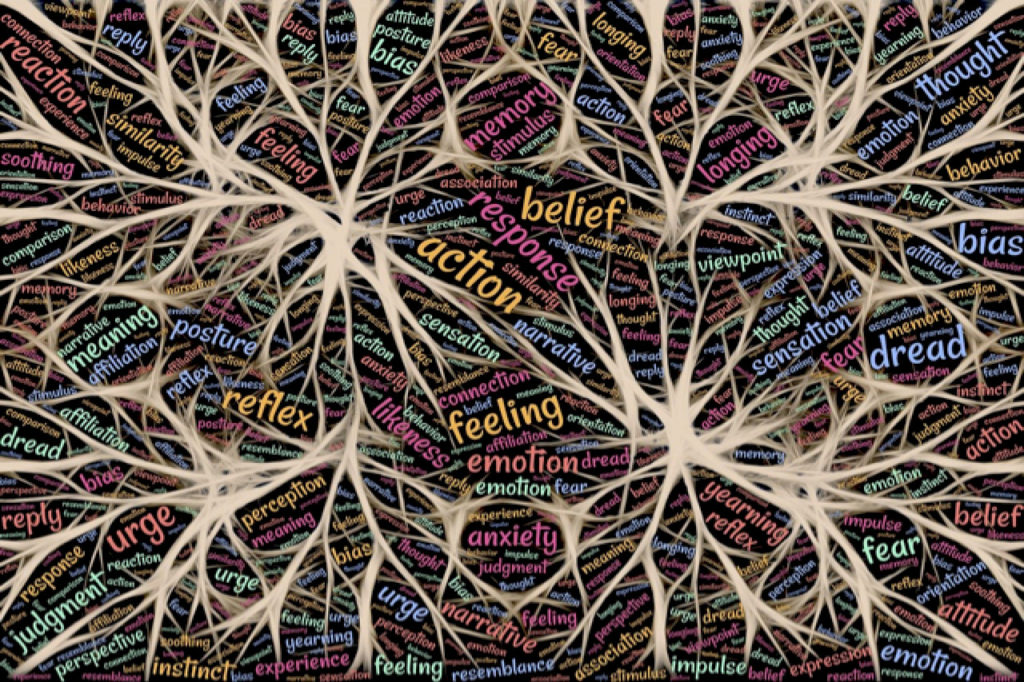Unless you’re a zen master, full-time monk, or on a steady flow of Xanax, it can be really challenging to handle these tumultuous times with grace, and remain in an idealistic state of “ease.” But you’d like to, right?
Luckily, we have an army of neurotransmitters floating around in the three pound mass between our ears that we can use to transform the way we think and function.
You may be nervous that I’m about to suggest some spiritual, woo-woo ceremony to transform the crystalline structure in our minds so you can escape it all and find your way to bliss.
I’m not.
We are human, and leaning into our feelings of pain, suffering, and anger are part of our human experience.
Let’s be honest, our human experience can be trying and most of us have endured some degree of suffering.
The key, therefore, isn’t to escape or pretend there’s no suffering. Instead, we can invite gratitude to live alongside, and amid suffering.
We as dynamic, developed beings need not live in fear-driven, dualistic ways of good vs. bad. We can experience sadness and in a given moment and simultaneously recognize sources of beauty.
And this isn’t crazy woo-woo talk. It’s science.
Like when we create a regular practice, as we consistently fire our neural pathways with the right kinds of thoughts, they transform from neural footpaths into neural highways. What we think and how we think about things matters.
For example, if Sally, your grumpy, jaded friend, begins to express gratitude consistently, this deliberate change in thinking will, over time, create neural pathways that previously did not exist. As she continues her practice, those initial brush-shrouded footpaths of positivity and gratitude transform into eight-lane highways.
Sally becomes one of those grateful, chipper, happy-go-lucky people.
If you’re skeptical, I get it.
“Gratitude journals” and Instagram accounts that regale us with emotive images and #blessed or #grateful hashtags have become ubiquitous — and gratuitous.
Gratitude has, apparently, become big business — and it’s left us feeling a bit icky and trite.
But as something so transformational and powerful, I say we give gratitude another chance.
So what is it, really?

Scientists call gratitude a positive emotional response that we perceive upon giving or receiving a benefit from someone. Cicero, in Roman culture, named gratitude the “mother” of all human feelings.
In woo-woo talk, it’s that tingly, fuzzy, feel-good sensation inside our minds and hearts. It’s validation and an instant feeling of happiness.
When we express gratitude, it acts as a catalyst causing our brain to release dopamine and serotonin — the neurotransmitters responsible for happiness.
There’s more to it, of course, but you get the idea. But for this to have any impact, you need to practice it — and practice it the right way (which is where those journals and Instagram accounts can go astray).
So here’s a simple way to start.
You know that warm fuzzy feeling when you get mail that’s NOT a bill — especially when it’s a handwritten note from a friend or loved one?
Well, you’re going to give that gift to someone this week.
Write a love note to someone. It can be as short or as long as you’d like — this doesn’t have to be a drawn out project. My husband,Charlie, is notorious for completing his in five minutes— including writing out the address and slapping on a stamp (he calls it being efficient, but detailed, slightly verbose, letters can be nice too!).
But this is more important than merely sharing your feelings with someone (which is great all by itself). UCLA neuroscientist, Dr. Alex Korb, explains that when we exchange thank you notes, we are re-choreographing our brain pathways to pay attention to that which we already have, thus “producing intrinsic motivation and a strong awareness of the present”. It almost sounds like thank you notes could help with your mindfulness practice! 😉
So while we are telling someone else how much we appreciate, support, or love them, we are inherently practicing gratitude and supporting our brain (building that “neuro-highway”).
Hey — I think that’s worth 5 minutes of your time!
If you’re worried that you might not get a response (although, just for the record, that’s not the purpose of this exercise!) — try writing to your mom.
Or me. I’ll respond — seriously. (I AM the queen of love notes.)
The MAPS Institute
1732 1st Avenue, #20844
New York, NY 10128
Hang in there during this time. I know you’re working hard, and I’m grateful that you exist.
